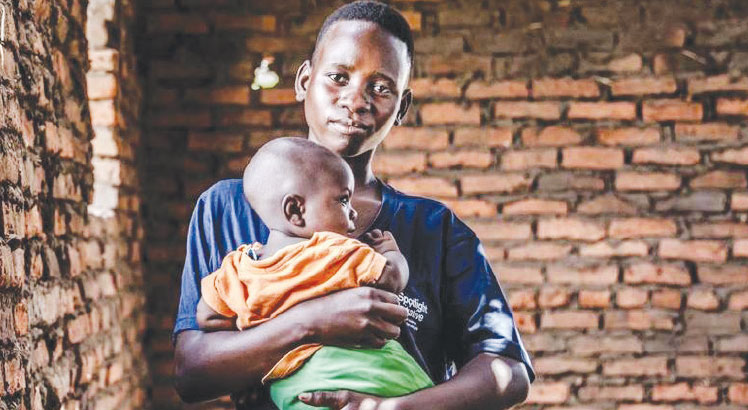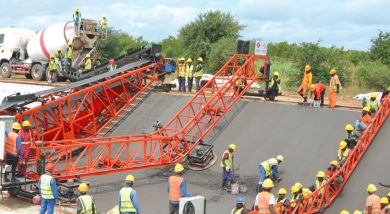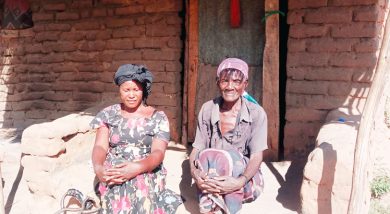Closing SRH rights inequities
At 15, Tuweni was pregnant. The teen girl went to Makanjira Health Centre in Mangochi for delivery, but she had an obstructed labour.
Due to the complication, medical staff at the local health facility had to send her to Mangochi District Hospital which was better equipped to help her deliver through caesarean birth.
Unfortunately, her baby died. The complications before the delivery saw her developing an obstetric fistula, an abnormal opening between a birth canal and her bladder or rectum.
This distressing outcome is not just her story but mirrors the broader challenges adolescent girls encounter across Malawi.
It is rooted in early pregnancy often linked to child marriage, and sexual and gender-based violence.

Early pregnancy is also linked to early sexual debut, with 19 percent of women aged 25-49 years having their first sex before age 15 and 64 percent before 18. This results from multiple factors, including initiation ceremonies and rape.
If a girl faces all these challenges, there is a high potential denied. One unplanned pregnancy is enough to deny the potential of a young girl’s aspirations, reinforce poverty cycles in her life and reduce access to opportunities.
Despite these challenges, the last thirty years have been marked by significant progress in women’s health.
Maternal death rates in the country have fallen from 675 per 100 000 live births in 2010 to 439 per 100 000 live births in 2015, with 25 percent of deaths occurring to adolescent mothers below the age of 20.
This year’s State of the World Population report by UNFPA finds that 30 years of progress in sexual and reproductive health (SRH) has mostly ignored the most marginalised communities. The report, titled Interwoven Lives, Threads of Hope: Ending Inequalities in Sexual and Reproductive Health And Rights, stresses the urgent need to address disparities in reproductive healthcare that hinder progress in maternal health globally.
In Malawi, as evidenced by the staggeringly high adolescent birth rates—one of the highest in Africa—young women and adolescent girls continue to bear the brunt of these disparities.
This aligns our local challenges with global priorities, emphasising the necessity for innovative, tailored solutions that respect and respond to the specific needs of communities.
But as we push forward, we have to ask who is still being left behind.
The data tell a troubling story. Women and adolescent girls on the margins of society are yet to see significant change in their access to sexual and reproductive health and rights. Socioeconomic status, sexuality or disabilities should never determine a person’s ability to live a safe and healthy reproductive life.
Yet, while others have reaped the benefits of changing norms around contraception and improved access to obstetric care, too many communities are still facing high rates of maternal mortality, unintended pregnancy and ill health.
As a result, progress is slowing and it has stalled completely. Annual reductions in maternal death have flatlined – since 2016, the world has made zero progress in saving women from preventable deaths in pregnancy and childbirth.
One in four women cannot make her own health-care decisions. Nearly one in 10 are unable to choose whether to use contraception.
We see evidence of these challenges here in Malawi. The adolescent birth rate remains extremely high, with about 136 births per 1 000 girls aged 15-19.
This translates to three out of 10 girls aged 15-19 in Malawi giving birth, ranking among the highest in Africa.
These statistics highlight the inequalities inherent in our sexual and reproductive health systems, but the path forward is clear: We must prioritise reaching those furthest from access to health care.
We need to dismantle barriers to reproductive rights and empower women and adolescent girls to make autonomous decisions about their bodies and futures.
These are not problems that can be solved with one-size-fits-all approaches.
Instead, it’s time for us to empower women and adolescent girls to craft and implement tailored, innovative solutions that work for their communities.
The improvements in women’s health metrics over the past 30 years are a testament to the power of collective action and dedicated investment.
We must not lose the momentum we have built. In the coming decades, let us measure progress, not by the gains afforded to those easiest to reach, but by the ability to lift up everyone.
We cannot afford to lose the momentum we have built. We must continue to fight for the rights of all women and girls to access essential sexual and reproductive health services.
This commitment to action is not only for those who are easiest to reach but must extend to every individual, regardless of their socioeconomic status, sexuality, or disability.
Join us in advocating for and supporting initiatives that extend healthcare services to the underserved, dismantle barriers to reproductive rights, and empower every woman and girl to make informed decisions about her body and future.





